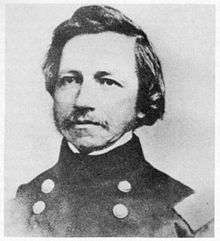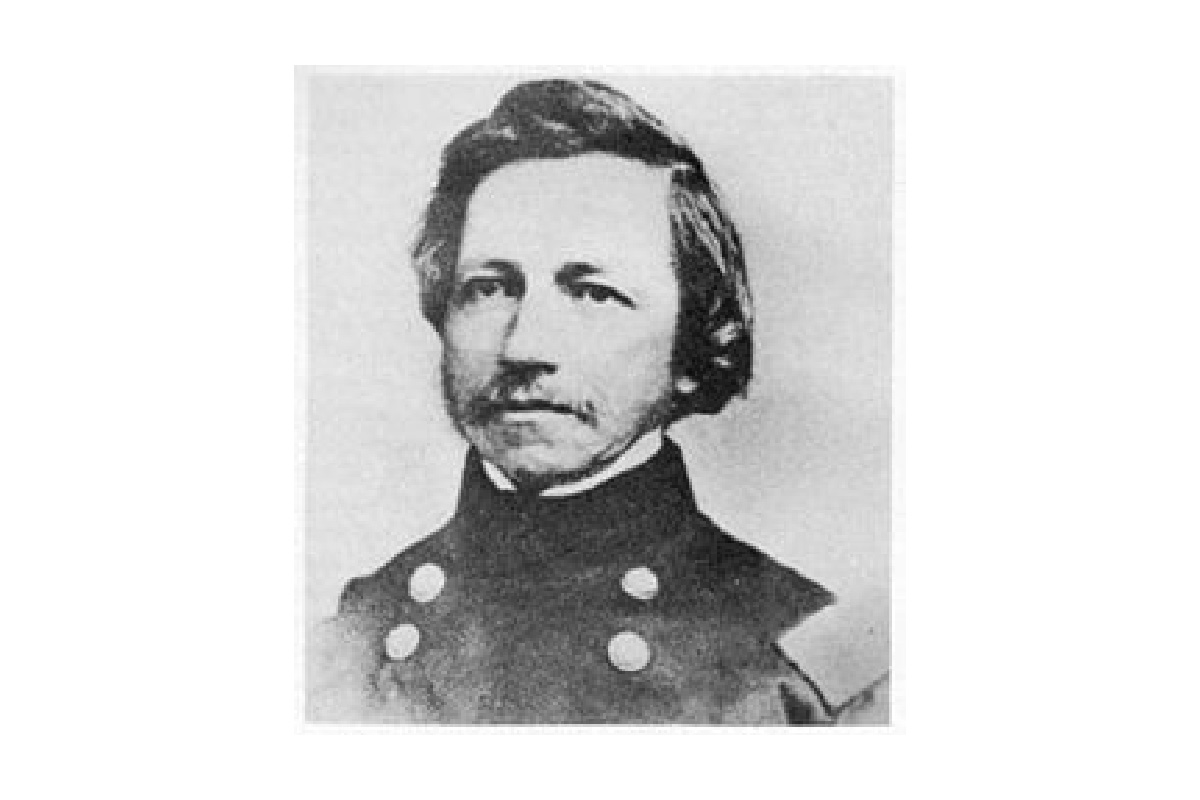
The workhorse among the Army’s Corps of Topographical Engineers surveying the southern border of the New Mexico Territory during the 1850’s was Lt. Amiel Weeks Whipple. He was the steady and sure wheelhorse of J. R. Bartlett’s and Major William Emory’s boundary commissions. The treaty makers had made a number of SNAFU’s when establishing the new 1,500 mile boundary between the United States and Mexico in 1848 and it was up to Engineers like to Whipple to straighten out the mess before hostilities broke out again along the border.
Whipple finally finished the boundary work on December 10th, 1849. The surveyors would have to return five years later following the Gadsden Purchase when the border was changed from the Gila River to the present boundary.
Earlier that year Whipple, a thirty-one-year-old native of Massachusetts had rescued a young Yuma Indian girl who’d been lost in the desert. The girl was nearly dead from exposure, thirst, and hunger. Whipple kindly shared his water and food with the youngster and before she was returned to her village, he presented her with a small vanity mirror. It was a simple token of friendship, and something any young girl would cherish. He bid her goodbye and didn’t expect to ever see her again.
Two years later however, and Whipple returned to survey the Gila River, which at the time marked the boundary between New Mexico and Mexico. By December 22nd, they were some 60 miles upstream from Fort Yuma at the confluence of the Gila and Colorado Rivers. Supplies were running low so Whipple decided to pack up his gear and take his 47-man force to Fort Yuma to spend Christmas and resupply.
They arrived at Fort Yuma on Christmas Eve to find it abandoned. Instead, he was greeted by a force of some 1,500 rebellious Yuma Indians who had closed the Gila Trail because of abuses perpetrated upon them by emigrants passing through to the gold fields of California. He learned through an interpreter they planned to attack the next day and wipe out the soldiers.
Whipple gathered his little force on a hill near where the Yuma Territorial Prison stands today and prepared to make a stand. The next morning as the war chiefs gathered their warriors Whipple stood in front of his men facing them. An attack seemed inevitable.
At that moment a young girl stepped forward and spoke to her father, who was one of the chiefs. She pointed out Whipple as the man who saved her life two years before. The chiefs called for a parley and asked Whipple if he had been there two years earlier. The youngster was accompanying them. He smiled at her and said “Yes,” he was that officer who had rescued the little girl.
The tension was broken and a massacre that Christmas day of 1851 was averted thanks to the kindness of Army officer with the Corps of Topographical Engineers.
The Yuma People (Quechan) prepared a Christmas feast for Whipple and his men and the next day ferried them across the Colorado River and the Topographical Engineers and their escort headed to San Diego.
What might have been an infamous Christmas Day Massacre was averted because of the kindness of a kind young officer.
Whipple rose to the rank of general during the Civil War and was killed by a sniper at the Battle of Chancellorsville in 1863. A year following his death, Fort Whipple, Arizona was named in his honor.






